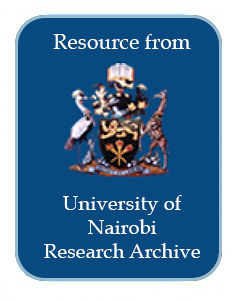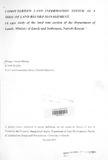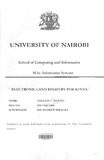Community Opinions on Wildlife, Resource Use and Livelihood Competition in Kimana Group Ranch Near Amboseli, Kenya
Kimana Group Ranch (KGR) is a critical wildlife dispersal area for Amboseli National Park in Kenya. But
irrigated agriculture in the group ranch is leading to increased conflicts and competition for land and other critical
resources. This study used semi – structured interviews with group ranch members on their interactions with wildlife,
resource use and access, land use changes and livelihoods. Most group ranch members practiced agriculture as opposed to











